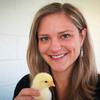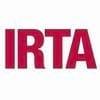Explore all the information on
Poultry welfare
Proper animal welfare involves providing the proper housing, management, nutrition, disease prevention and treatment, responsible care, humane handling and, when necessary, humane euthanasia. These factors allow for the most optimal and humane growing environment. The concept of animal welfare includes three elements: the bird’s normal biological functioning, its emotional state and its ability to express its natural behaviors. Improving animal welfare can be accomplished through offerings like poultry feed enrichment, which can reduce stress, thereby increasing performance, productivity and profitability. Animal welfare is currently a major requirement for intensive poultry production. Beak trimming, stocking density, free access to feed, heat stress, and air pollutants became important issues, which are regulated in several countries. Animal welfare is observed by watching how birds naturally behave and even by looking at mortality stemming from aggressive behaviors.
Northern fowl mites (Ornithonyssus sylviarum) are one of the more common ectoparasites (external parasites) that can be present in a flock. These mites live on their host throughout their life and feed on poultry blood. They are most commonly found around the vent, tail, and breast of the birds. Although these mites prefer poultry as a host,...
Comments : 0
Recommendations: 1
During IPPE 2022 in Atlanta, Edgar Oviedo-Rondón (North Carolina State University) talked about two projects where they worked together with companies to improve their decision-making process by using data. You can find more information on this program here: https://poultry.ces.ncsu.edu/the-poultry-decision-makers-workshop-series/....
Comments : 1
Recommendations: 1
1. Introduction The consumption of poultry meat has shown an increase from 2016 (116,845.36 thousand metric ton) to 2018 (120,884.63 thousand metric ton) [1]. Moreover, during the period 2020–2029, global livestock production is expected to expand by 14%, poultry remaining the fastest growing meat accounting for about half of the projected increase in total meat output, while world population is expected to grow only by ca 1% per year [1]. The goal of the poultry...
Comments : 0
Recommendations: 2
Environmental factors encountered during pre-natal life influence the developmental trajectory of a developing embryo, altering post-natal phenotypes (Du et al., 2015). Maternal nutrition and stress directly influence the maternal environment, with both factors prominent in the broiler breeder industry. Broiler breeders are feed restricted to improve reproductive output; however evidence suggests hens suffer from chronic stress due to prolonged hunger (Mench, 2002). Feed restriction in...
Comments : 0
Recommendations: 0


A Natural Choice for Growth Enhancement in Farm Animals - 3 ESSDENDIS
Suggested link
10 innovators will present their breakthrough innovative technologies at this year’s Animal AgTech Innovation Summit in San Francisco on March 21.
The featured start-ups are tackling key challenges within livestock, poultry and dairy with transformative solutions such as creating novel seaweed feed additives, preventative health solutions, and monitoring supply chain optimization through artificial intelligence and machine learning.
Known globally for...
Comments : 0
Recommendations: 1
INTRODUCTION Campylobacter spp. is well recognized as the leading cause of bacterial foodborne diarrheal disease and poses a serious economical and health risk globally (Skanseng et al., 2010; Silva et al., 2011; Meunier et al., 2015). The most common route of campylobacteriosis infection in humans is the handling or consumption of contaminated poultry meat (Lee and Newell, 2006). Campylobacter spp. is a commensal organism found in cattle, sheep, swine, wildlife, and domestic...
Comments : 0
Recommendations: 0
Eggshell quality can be affected by multiple factors. This article focuses on eggshell problems derived from calcium deficiency and heat stress , a frequent problem during warm seasons. The eggshell is mainly composed of calcium carbonate, and it is estimated that a laying hen secretes approximately 600 grams of calcium during its laying period to form the eggshell, which is thirty times the amount of calcium present in its body. This fact shows the high calcium...
Comments : 2
Recommendations: 2
Michael Binder, Vice President Sustainability Development at Evonik Animal Nutrition, points out Evonik’s commitment to sustainability performance with a focus on a positive impact for society, supporting sustainable livestock production in Brazil and around the world...
Comments : 1
Recommendations: 9
Mohammed Mouhafid, Regional Technical Manager for Africa at AlzChem, points out the negative effects of Heat Stress and How Creamino® reduces the negative impact of this issue in poultry....
Comments : 6
Recommendations: 9


Broiler trial in the Netherlands confirms 2018 EFSA scientific opinion on methionine sources while validating the experimental approach
Suggested link
This newsletter provides an overview of the anatomy of the keel bone, risk factors and welfare implications associated with keel fractures, how to assess keel bone integrity, and management strategies to mitigate keel fractures in laying hens. ...
Comments : 0
Recommendations: 0
Maven of diversified fields including Steve Jobs believes in Quality rather than quantity. In Poultry, quality egg even if less quantity can conquer more profit than the poor quality (cracked, soiled, smelled, less weight, misshapen, etc) but more in quantity eggs. Summer is the...
Comments : 1
Recommendations: 3
.jpg&w=3840&q=75)

Srinivasa Farms and Hy-Line: Pioneering Growth in India’s Poultry Market
Suggested link
Leg problems are among the top health concerns of poultry raised for meat. Leg problems influence poultry at all stages of production, lead to reduced productivity and contribute to mortality. Leg problems have many different causes and contributing factors, including...
Comments : 1
Recommendations: 0
I. INTRODUCTION Human consumption of chicken meat products has risen exponentially over the past five decades and continues to grow on a global scale. Thus chicken meat production has seen unparalleled expansion, to meet the continually increasing consumer demand (Allievi et al., 2015). Such expansion has resulted in the chicken meat industry being at the forefront of animal production, where advances in animal nutrition and genetics are near optimal. Therefore, producers...
Comments : 0
Recommendations: 0
DESCRIPTION OF PROBLEM Farm animals need optimal environment for development and growth in order to reach their genetic capacity. Any weakness of the components of environment may decrease the performance. Consuming water is one of the main pillars of the obtained performance. Importance of consumed water by animals during the growing and fattening period is a reality in the whole livestock sector. Water is considered as nutrient and essential element for all the...
Comments : 39
Recommendations: 5
Calculating a proper stocking density will determine the maximum farm profitability in broiler chickens. Choosing the stocking density implies knowing the impacts on live performance, and its interrelations with the environment and dietary nutrients. Abundant studies about stocking density run under non-commercial conditions might not indicate the best reliable information to know the farm profitability. As a result, few studies are reliable for commercial purposes. Poultry managers should...
Comments : 5
Recommendations: 3
Heat Stress in Laying Hens Heat stress is one of the primary concerns for laying hen production in the summer as heat waves may significantly increase flock mortality and reduce egg production in hen houses. The use of mechanical ventilation and cooling cells are popular cooling methods used in the southern US, including Georgia. However, most of the layer farms in the US Midwest (where over 50% of US table eggs are produced) do not have evaporative cooling systems due primarily...
Comments : 0
Recommendations: 0
It is widely accepted that the absence of suffering no longer defines animal welfare and that positive affective experiences are important (Mellor 2015). However, there are few valid and reliable tools available to comprehensively...
Comments : 0
Recommendations: 0
Bacterial chondronecrosis with osteomyelitis (BCO) is an infective leg condition that results in lameness, affecting meat chickens internationally. BCO can be induced using mechanical challenges such as wire ramps (Wideman 2016). Based on a study wherein perches had a negative impact on bird latency to lie (LTL) at 42 days (d) old (Phibbs et al. 2020) perches may be a mechanical challenge to birds also, reducing their leg health in a similar way to Wideman’s ramps. This study compared...
Comments : 0
Recommendations: 0
I. INTRODUCTION Maintaining vegetation on free range farms with fixed ranges is a significant issue (Singh et al., 2017). Nonetheless, free range accreditation programs stipulate palatable vegetation to be available on the range at all times (RSPCA 2015). This is more problematic to achieve during dry seasonal conditions and drought, which are common features of the Australian climate. ...
Comments : 0
Recommendations: 0



































